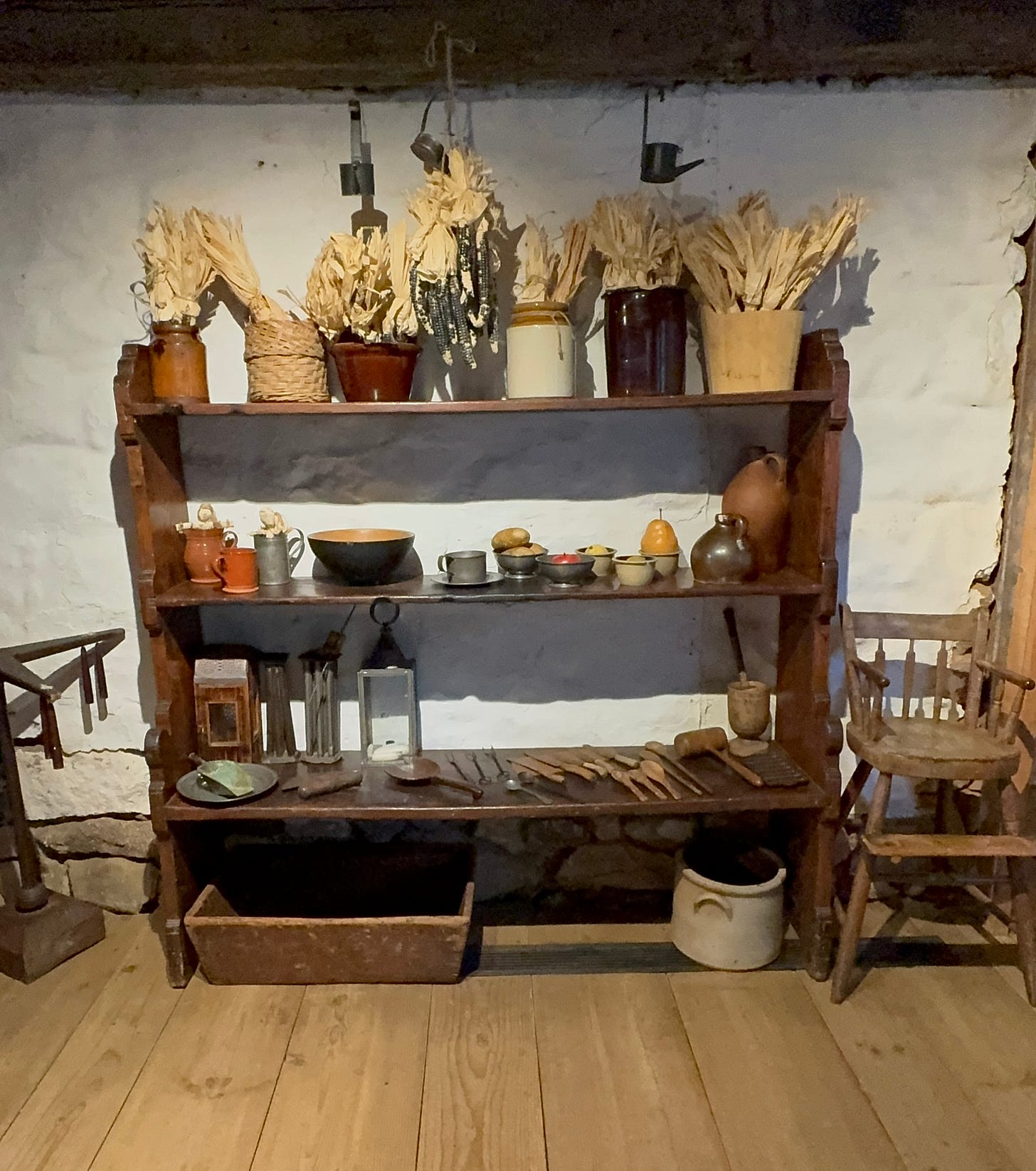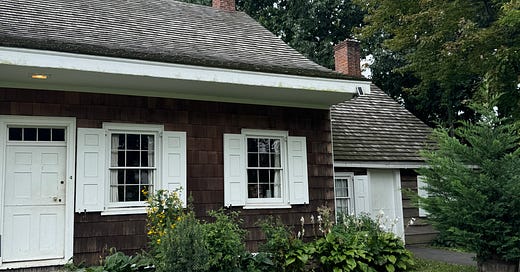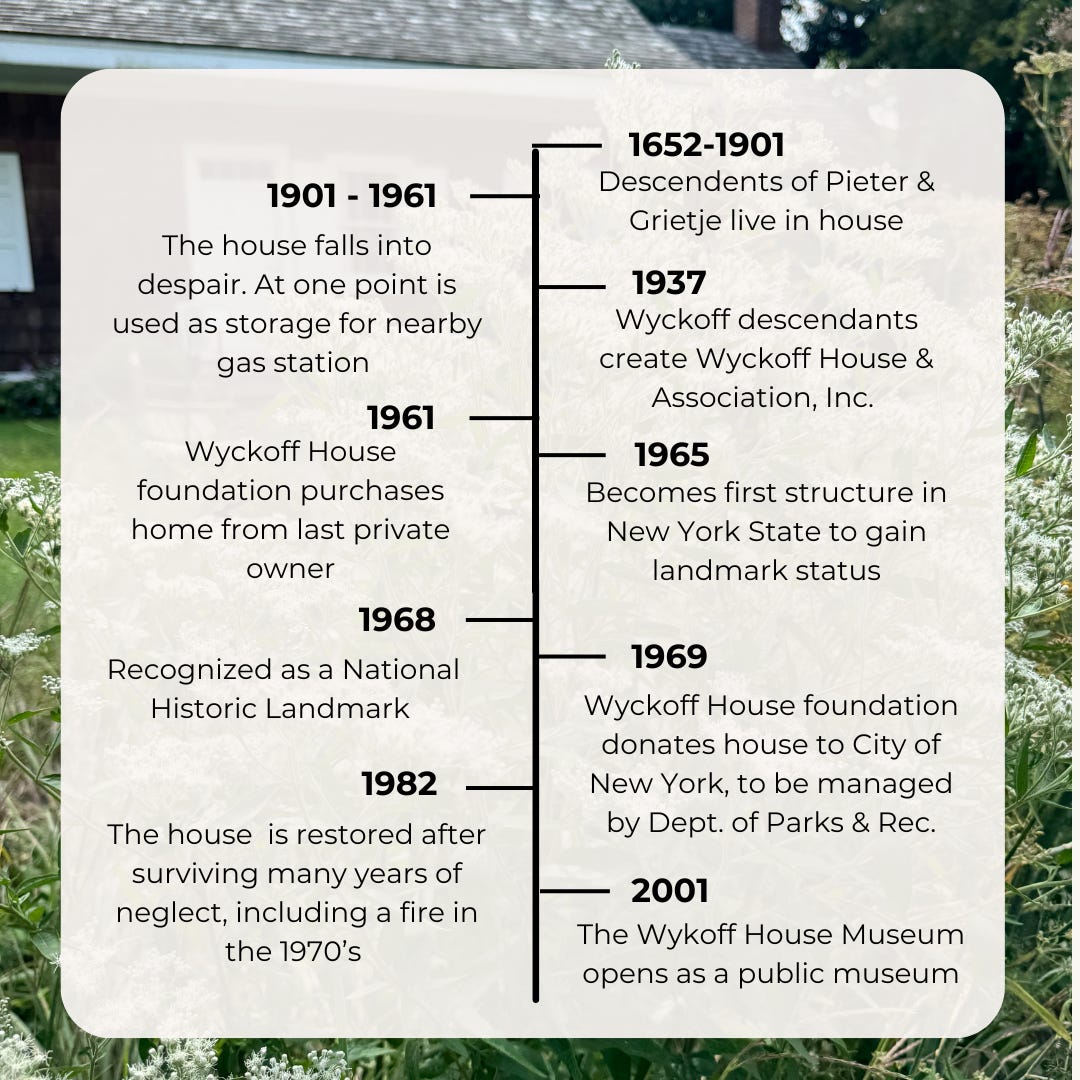NYC 13 Weeks of Adventure: Week 13 - The Wyckoff House Museum
The oldest structure in New York State and one of the oldest Dutch designs in the entire country.
Welcome to Love + Travel, a collection of thoughts and adventures for those seeking an audacious life.
Check out my write-up from last week about The Lit. Bar, or the entirety of my published work, here.
I find it poetic that the last summer adventure arrives on the first weekday of fall.
I'm not one to be wasteful—my favorite pairs of boots and sandals are over ten years old, and I can't stand even the slightest waste of food. I’m into savoring every last drop. It’s like watching with wonderment at each phase as a wave rises, crests, and falls.
There’s value in every single moment of a season.
Thank you for rocking with me as I adventured all over the city that will always be home. I opened this series in Brooklyn, so it is only right I end it here as well. We did it, ya’ll!
For the love of adventure,
RL.
If you ever needed proof of Brooklyn’s sturdiness, behold The Wyckoff House Museum.
Located at the corner of Clarendon and Ralph Avenues, the Wyckoff House Museum is the oldest structure in New York State and possibly one of the oldest Dutch designs in the country. Built in 1652 and expanded in 1750, this building predates the signing of the Declaration of Independence, cementing its place in early American colonial history.
The residence first belonged to Pieter Claesen Wyckoff, a Dutch indentured servant who became a slaver, farmer, and magistrate after completing his contract. Together with his wife, Grietje van Nes, they settled in the village of Nieuw Amersfoort, now known as Flatlands/East Flatbush. Many of Brooklyn’s most iconic streets—like Nostrand Ave. and Classon Ave.—bear the names of wealthy Dutch slave owners, adding both a foreign and familiar layer to J’ouvert celebrations held in those same neighborhoods. Pieter and Grietje had 11 children, all but one of whom went on to have children of their own. Today, their descendants number over 50,000.
The house's survival across generations is nothing short of miraculous:
The home is a modest structure, and in the nearly 400 years since its construction, the street level has risen around it. As a result, only a small portion of the roof is visible when passing by on the surrounding main roads. The 1.13 acres of urban farmland that envelop the building don't exactly help with visibility either—features like a teepee, several sheds, and fruit trees obscure the view. There's also a greenhouse, along with the dense foliage of vegetables, herbs, and flowering plants, making it even more challenging to catch a glimpse of history. The land yields everything from squash and watermelon to lemongrass and stinging nettles. Honey from the park’s beehive is harvested and sold at the weekend farmstand, and three chickens—Honey Bun, Blackberry, and Red Velvet—make their home in the coop at the rear of the house.

Currently, the Wyckoff House Museum offers public and school groups tours, fostering cultural and agricultural connections with the community. Through these tours, visitors gain valuable insights into how the space was used, what daily life for the family might have been like, and a proper understanding of slow living—such as the fact that making a single shirt could take up to three months. The original flooring in the house’s extension reveals the width of the trees that once flourished in the area, and the gaps between the planks provide a clear view down to the root cellar below. Many things during the tour amazed me, but none more so than the “Cousins Book.” I learned that the guests on the tour before mine were seventh-generation Wyckoffs, living on the West Coast, who had traveled to Brooklyn to visit their ancestral home1, sign the book, and if they are familiar, outline which descendent they come from.
Growing up near something so historical without knowing its significance is strange. I’ve passed this place hundreds, if not thousands, of times while shuttling about the city, often unaware of the stories woven into its walls. The Wyckoff House Museum is a testament to Brooklyn's rich heritage and a beacon of resilience in a rapidly changing world. It challenges me to think broadly and imagine creating something that will be around centuries from now that can help others find their way back home. As we navigate the complexities of modern life, this site reminds us of the importance of grounding ourselves in history while striving for innovative solutions for the future. It calls us to honor the past, engage with the present, and envision a legacy that will inspire future generations. In doing so, we celebrate Brooklyn's sturdy foundations and contribute to the ongoing narrative of community and sustainability.
LET ME KNOW
If you could preserve any structure - public or private - what would you choose?
Have you traced your family’s history or lineage?
What does legacy mean to you?
Are there any century-old or older structures you enjoy visiting?
Imagine the feeling of stepping into the house where your family’s history began in this country. Unreal.








"The sturdiest inside the sturdiest." 📝 Word.
“What does legacy mean to you?”
in this season, legacy means attacking the blank page with curiosity to figure out what i’m thinking; to figure out what legacy means to me and not what the world thinks legacy should be to me. That for me, is legacy.